No Results Found
The page you requested could not be found. Try refining your search, or use the navigation above to locate the post.

Strategic planning is a deliberate process aimed at shaping the future priorities of a nonprofit organization. It hinges on the active involvement of key stakeholders, such as staff members, significant donors, strategic volunteers, and the board, who collectively evaluate the nonprofit’s mission and vision. The objective is to discern and prioritize the most crucial actions required for advancing these objectives over the next 3-5 years, achieved through the establishment of foundational strategic pillars, objectives, and key performance indicators (often referred to as goals, priorities, or KPIs).
For a nonprofit strategic planning process, these are the two critical deliverables:
A strategic plan and a tactical plan serve distinct roles in nonprofit planning. A strategic plan is a high-level, long-term document that outlines an organization’s overarching goals and strategies, focusing on the mission, vision, and values. It provides a broad roadmap for the organization’s future and is typically reviewed and updated periodically, covering a span of three to five years or more. Often, this document, in its end state, will be beautifully designed, showcased on the website, and used with donors, key volunteers, and influencers to cast vision and belief.
In contrast, a tactical plan is a more detailed, short-term document that translates the strategic plan into specific tasks and activities. In other words, it’s creating an actionable workflow. It is highly specific, focuses on day-to-day, and is usually crafted for one year or less. Tactical plans provide the actionable steps necessary for executing the strategies outlined in the strategic plan.
In essence, strategic plans set the organizational direction and long-term vision, while tactical plans offer the precise guidance and actions required to achieve short-term objectives, making both types of plans crucial components of effective organizational planning and execution.
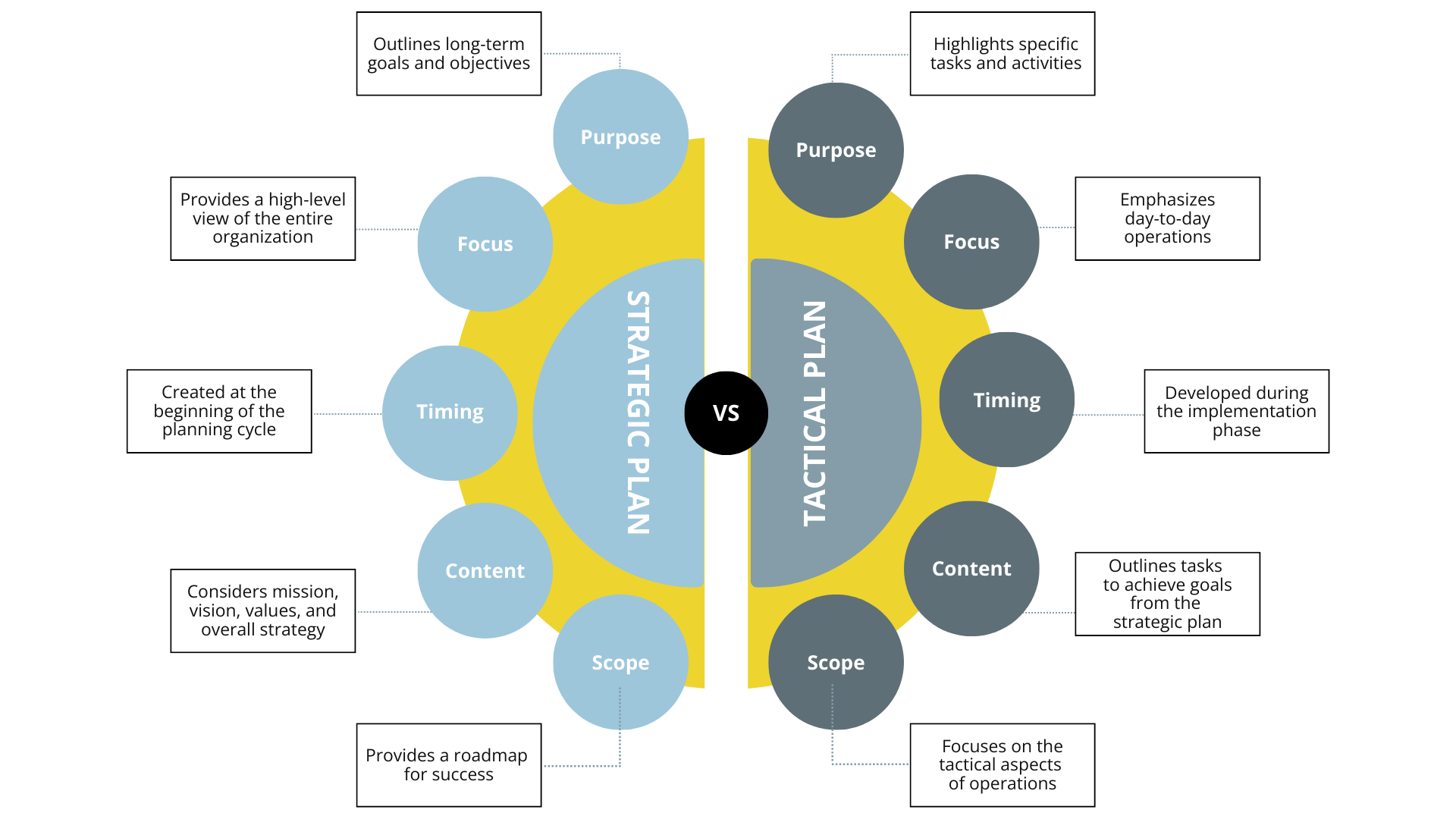
Important Insight about Strategic Planning:
The typical strategic planning process employed by many consultants in the nonprofit sector results in an aesthetically pleasing PDF document that is presented to the board and potential donors. However, most do not include a Tactical Plan that encompasses change management strategies and well-defined Key Performance Indicators (KPIs). Having a strategic plan alone is insufficient; it must be complemented by a tactical plan featuring clear timelines and measurable benchmarks. When engaging a consultant to lead your nonprofit’s strategic planning process, it is crucial to request examples of tactical plans they have previously assisted in creating.
At Catapult, we emphasize the creation of winning strategies over mere strategic plans. We believe it is not enough for a plan to merely look impressive on paper; there must be a seamless integration between a visually appealing Strategic Plan that gives a roadmap for success and a well-executed Tactical Plan that ensures success.
To assist nonprofit organizations in this endeavor, below are three templates that have proven valuable for many.
As every nonprofit organization is unique, with its distinct opportunities, challenges, mission, and DNA, each strategic plan is inherently distinctive. The purpose here is to provide you with 3 template models on how to approach your planning process before delving into the specifics. A visual of each strategic planning model that incorporates both Design and Accountability in included, recognizing that both elements are essential for effectively implementing your strategic plan.
After all, what good is a winning strategy on paper if there is no effective mechanism to bring it to life?
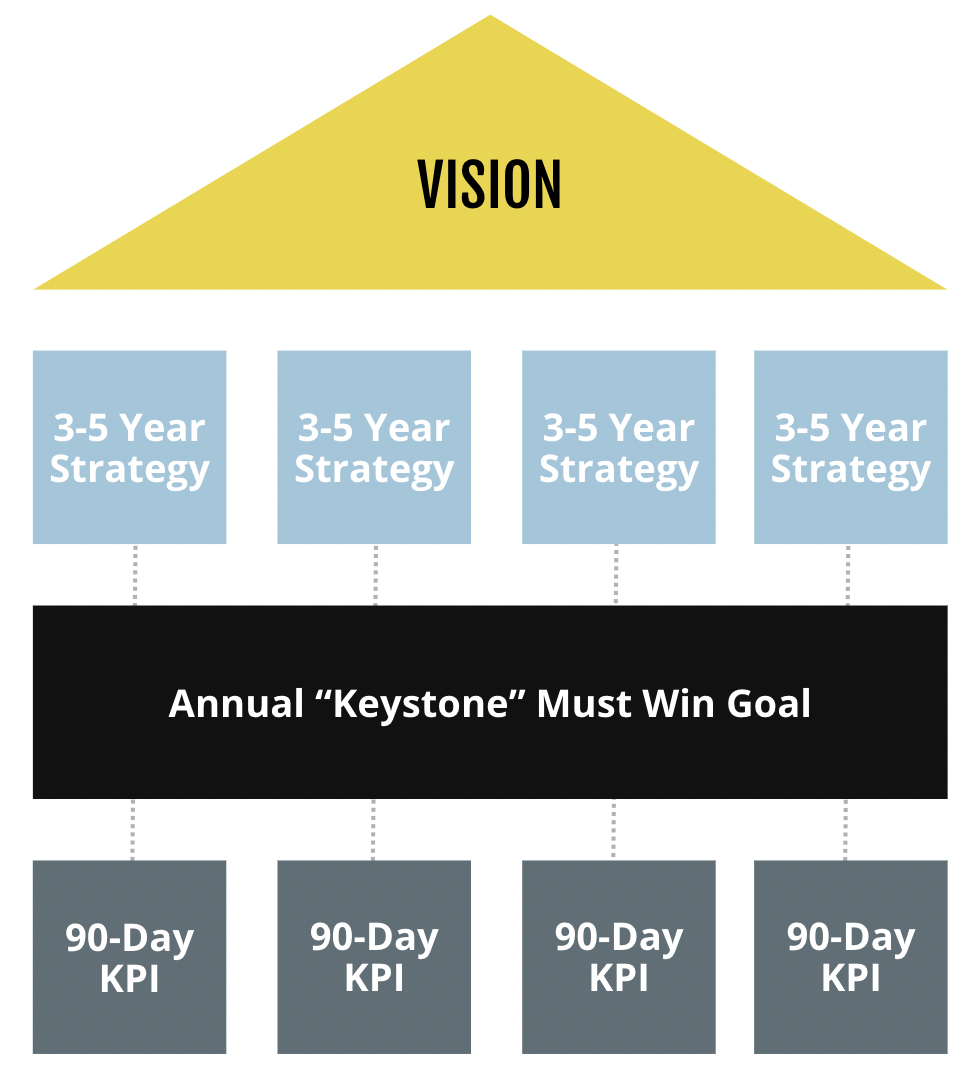
This Strategic Planning Template integrates a vision-driven approach with clear, intentional progression. It begins with the Vision, guiding the organization’s strategic layers. From there, leaders define high-level 3-5 Year Strategies and an Annual “Keystone” Must Win Goal, acting as a catalyst for organizational progress. To ensure accountability and progress, Weekly Check-ins and Monthly Reviews against KPIs and Annual Objectives keep everyone on track. The Quarterly Refresh fine-tunes the strategy in real time, while Annual Reviews provide a crucial decision point for completing or rolling over Annual Objectives. This model combines vision with practicality, creating a dynamic roadmap for a nonprofit’s success. Finally, nonprofit leads are not left to choose between a Strategic Plan or a Tactical Plan that activates your strategy into day-to-day workflow. This comprehensive planning process includes both.
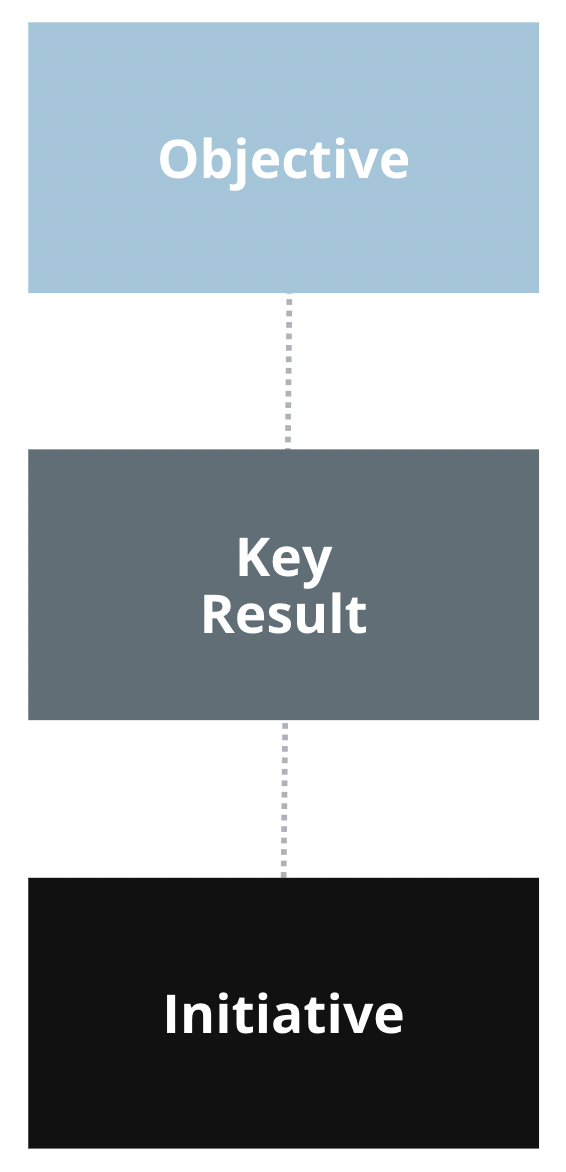
The OKR (Objectives and Key Results) model, as discussed in the points above, is a structured approach to goal-setting and performance measurement. The key to the process is stringent Weekly Check-ins and reviews, which introduces a level of administrative overhead for individuals and teams. One potential downside in the model is the Quarterly Refresh can lead to frequent changes in objectives, potentially disrupting ongoing day-to-day work. Finally, the Annual Reviews require thorough assessment and decision-making regarding the continuation or adjustment of objectives, adding a formalized process to the annual planning cycle.
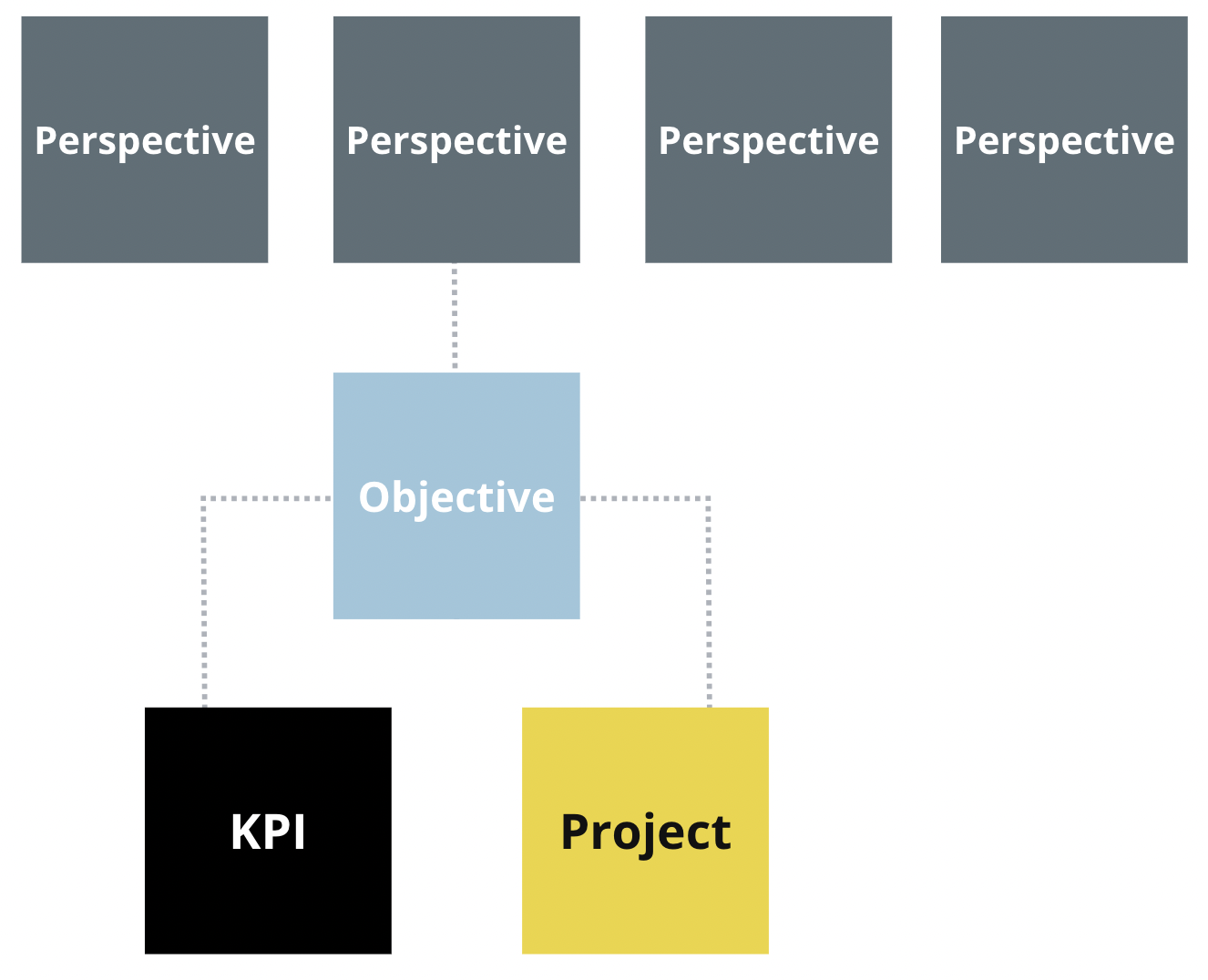
If you’re feeling overwhelmed by the idea of starting a strategic planning process with the nonprofit you help lead, we get it! It’s an important time in the life of any nonprofit and it can be a difficult journey. We would love to help you find a guide for that process. Whether that is Catapult helping you lead this journey or pointing you to a better fit, we would love to serve you.
Catapult’s published The Ultimate Strategic Planning Black Book to help nonprofits like yours take the first steps towards developing a rock-solid strategic plan. Join our email list to get the guide now.
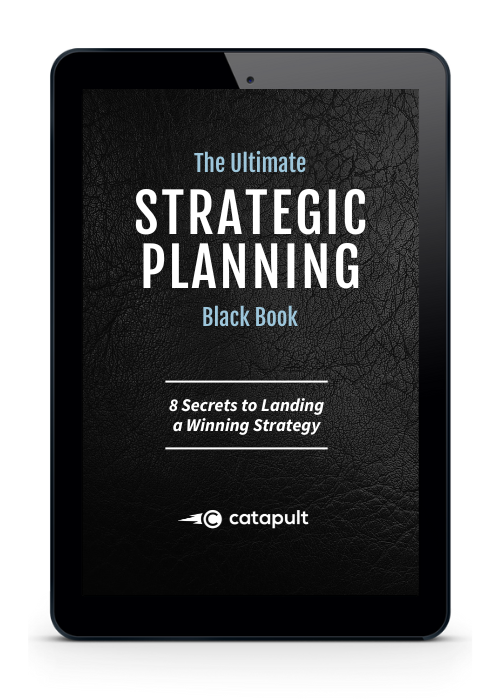
The page you requested could not be found. Try refining your search, or use the navigation above to locate the post.
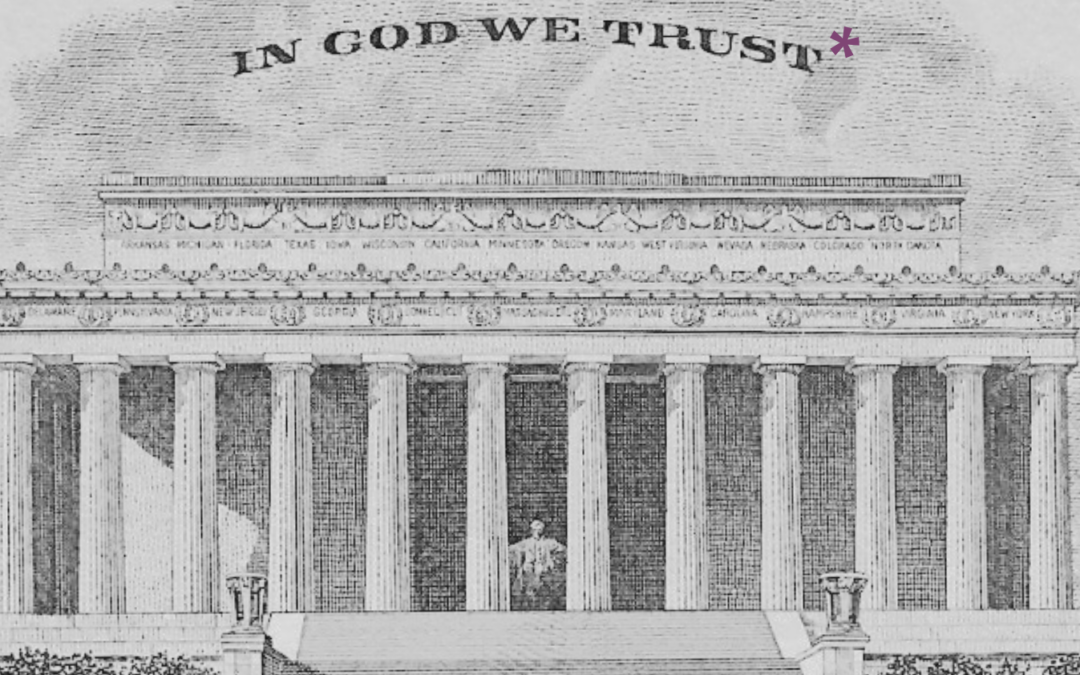
Despite the fact that we live in a very different world, with all kinds of new technology, massive cultural change and numerous other things, many churches are still running the same play.
The information in this resource represents the culmination of 30 years of research working with thousands of churches. While there is not a “one size fits all” when it comes to generosity culture, in our experience, these are the 5 areas that will certainly move the needle.
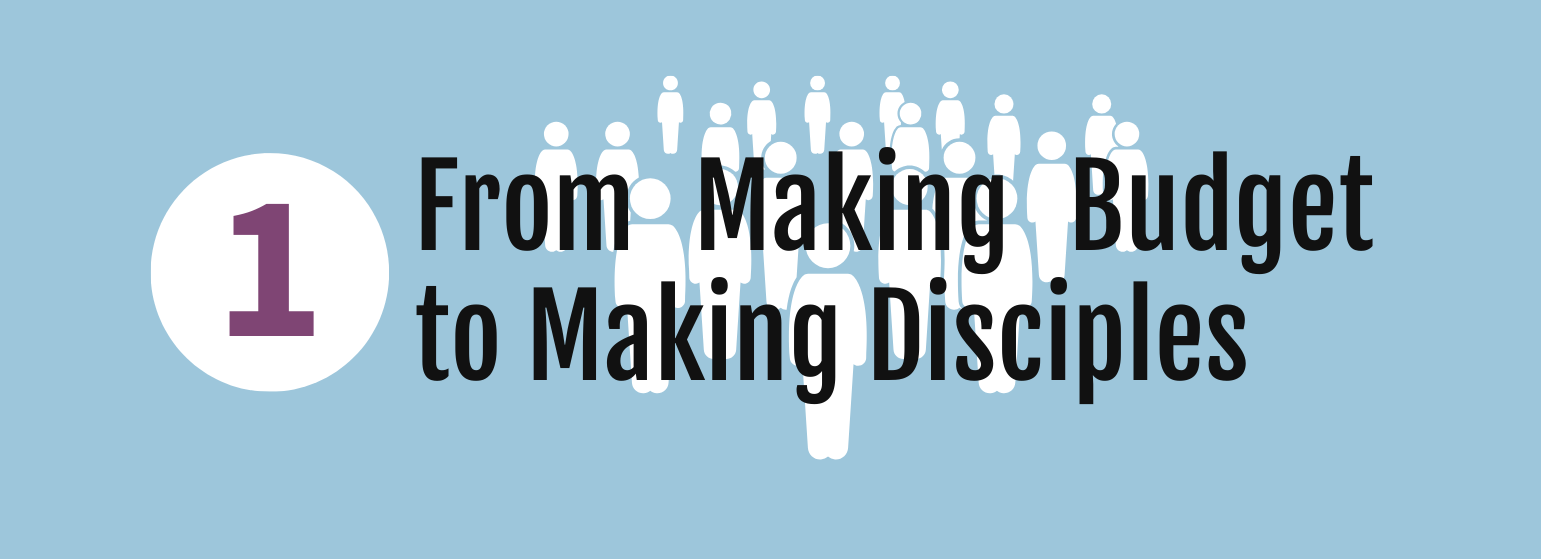
Typical communication about money in the church avoids the spiritual nuance of Jesus’ teachings on the topic and leans toward words like, “We are 5% behind budget so far this year” or “let’s be generous because the church needs a new roof.”
Don’t hear us wrong – we LOVE a good church budget meeting or a well executed capital campaign [it’s how half our team brings home the bacon].
As pastors, it is critical to shift from the “money talk” that centers on what the organization needs to stay afloat or what program needs funding. Our language needs to more consistently reflect the truth that generosity is a spiritual growth lens that impacts every part of the life of the believer.
Call your people to be generous to other causes beyond the church. It quiets the internal alarm that most Millennials and Gen Zers have when talking about money and helps your people see you’re not just running a “bate and switch” by asking for all their $$$.

Most generous Christians learn their convictions about money from parents, family, or close friends. Very few experience transformation primarily by the public teaching of the church.
That means one of 2 things:
1. Either we aren’t communicating about money from the pulpit very often.
OR
2. When we do communicate about money from the pulpit, it’s not effective.
[In our opinion, it’s a little of both…]
Take your top giver out to coffee and ask them who was most influential in shaping their posture towards giving and the specifics they learned from that person. Listen and make notes on what you learn about their philosophy of giving.

A vague one-size-fits-all challenge to be generous is not as helpful as a customized approach for people at various stages of their Christian maturity.
They both are in a discipleship journey but at vastly different places on the path. We need to start where people are located, not guilt or shame there for not being at our chosen destination for them out of the gate.
Take 5 minutes and jot down some key talking points you would use with someone who had never tithed before, but wanted to grow. Now, do the same for someone who gives over 20% of their income to ministries. How would you encourage them differently to stretch in their generosity?

Most members of churches see the “business office” personnel as the primary link regarding giving. The management of money (Finance & Stewardship Department) is often siloed from the spiritual formation value of generous living (Pastoral and Discipleship Department). This makes it nearly impossible to build a culture of generosity.
Coach and empower your financial team to see how their role can be leveraged to disciple your people. At the same time train your pastors to know how to talk about money and stewardship with your people.

Churches need effective and up-to-date methods of encouraging people toward generosity. This is about messaging, technology, generational shifts and more.
Send time educating yourself with new forms of giving such as: digital currency and donor advised funds. Find an expert who can unpack different ways people are donating their assets and not just cash.
Churches in the FUEL Funding Lab who have integrated our proven strategic practices and do not experience a 12% increase in their annual giving within a year of completing the Lab will be entitled to a full refund. That's how strongly we believe in the results of this process!